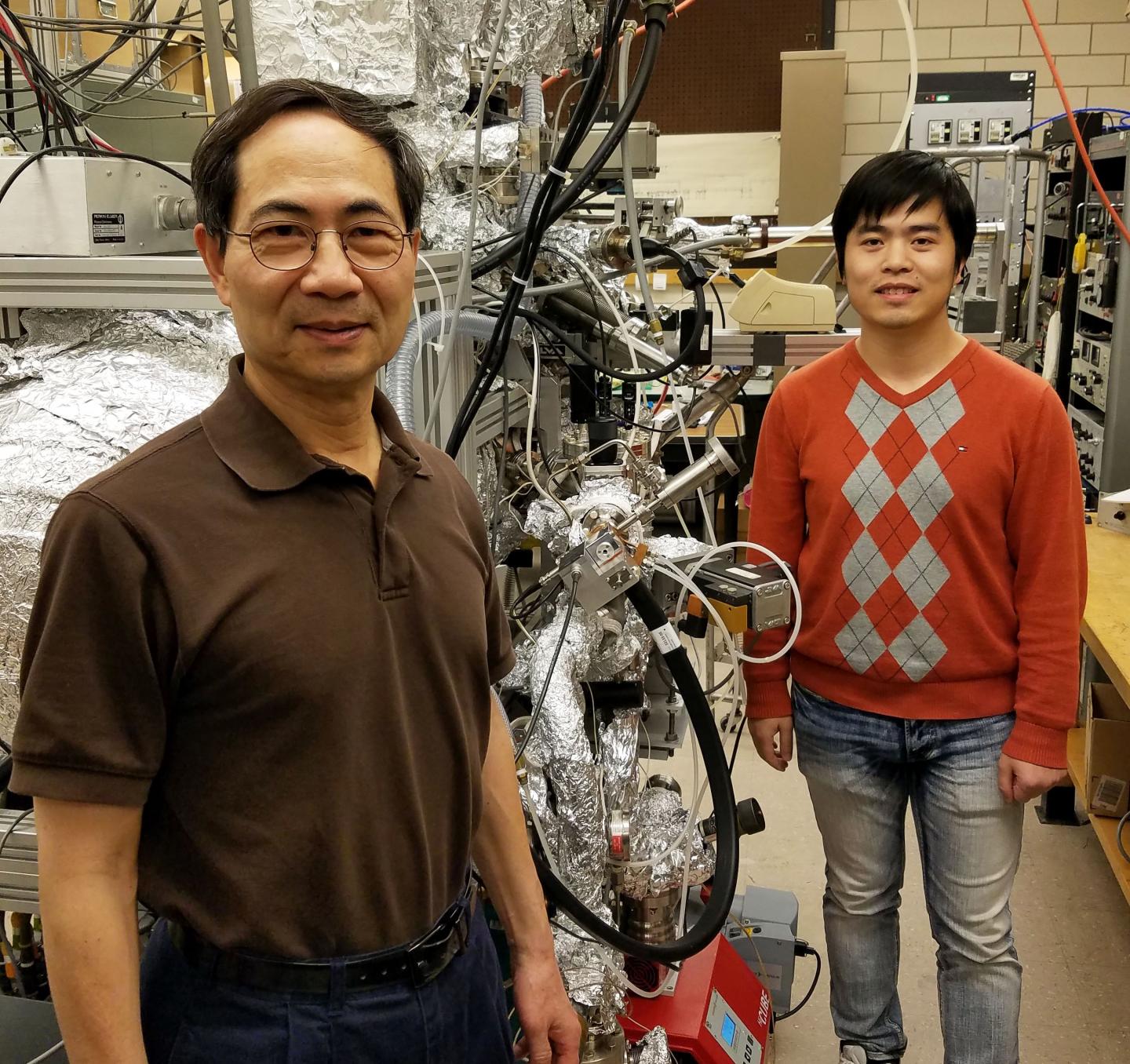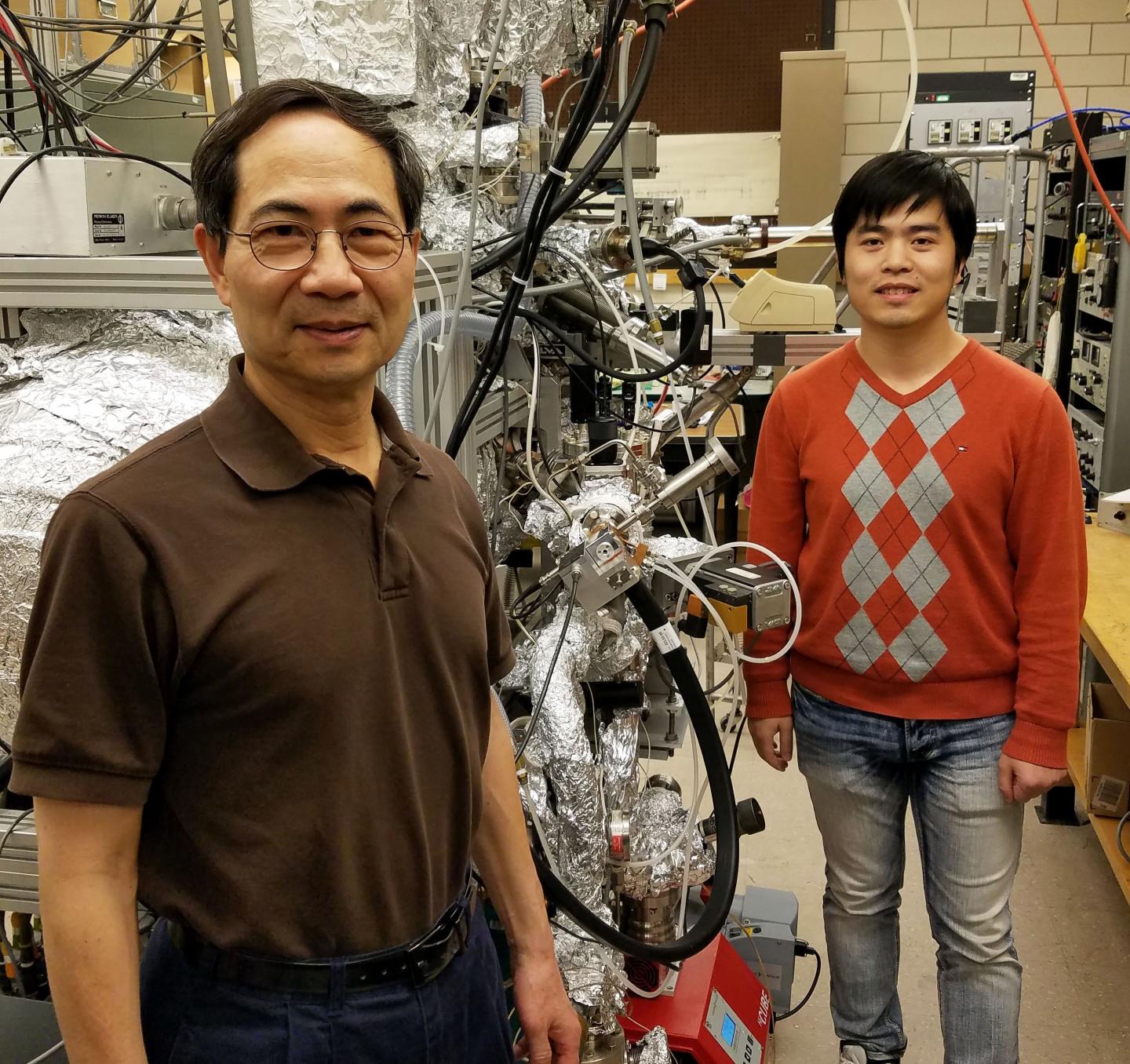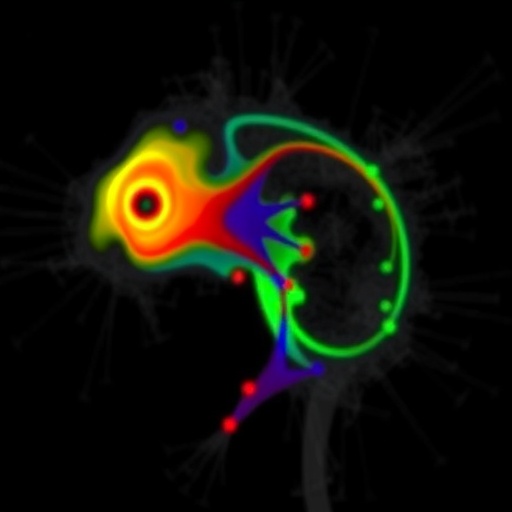
Credit: Physics Illinois
In a surprising new discovery, alpha-tin, commonly called gray tin, exhibits a novel electronic phase when its crystal structure is strained, putting it in a rare new class of 3D materials called topological Dirac semimetals (TDSs). Only two other TDS materials are known to exist, discovered as recently as 2013. Alpha-tin now joins this class as its only simple-element member.
This discovery holds promise for novel physics and many potential applications in technology. The findings are the work of Caizhi Xu, a physics graduate student at the University of Illinois at Urbana-Champaign, working under U. of I. Professor Tai-Chang Chiang and in collaboration with scientists at the Advanced Light Source at the Lawrence Berkeley National Laboratory and six other institutions internationally.
TDSs exhibit electronic properties akin to those of the now much-studied topological insulators (TIs) on their surfaces. The surfaces of TIs allow electrons to conduct freely like a metal, while the "bulk" or interior behaves as an insulator. The surface electrons behave as 2D massless spin-polarized Dirac fermions that are robust against non-magnetic impurities, which yields potential applications in spintronic devices and fault-tolerant quantum computing.
By contrast, the bulk electrons in TDSs behave as massless Dirac fermions in all three dimensions, which leads to additional possibilities for novel physical behaviors.
Xu explains, "TDSs are of profound interest to condensed matter physicists, primarily because they exhibit a number of novel physical properties, including ultrahigh carrier mobility, giant linear magnetoresistance, chiral anomaly, and novel quantum oscillations. Secondly, this class of materials can realize many interesting topological phases–under controlled conditions, the material can undergo phase transitions and can become a topological insulator, a Weyl semimetal, or a topological superconductor."
Tin has two well-known allotropes: at 13.2? Celsius and above, white tin, or beta-tin, is metallic. Below that temperature, the atomic structure of tin transitions, and the material becomes gray tin, or alpha-tin, which is semi-metallic. In thin films grown on a substrate such as indium antimonide (InSb), however, the transition temperature of tin goes up to 200? C, which means alpha-tin remains stable well above room temperature.
Normally, alpha-tin's diamond-cubic crystal structure exhibits an ordinary semi-metallic phase–and the material has no common uses at the present time. In fact, gray tin can be problematic in many applications that involve tin – the so-called "tin pest" problem is the formation of gray tin that causes disintegration of parts containing white tin.
In their experiment, Xu et al. engineered a strain on the material by growing alpha-tin samples in layers on a substrate of another crystalline material, InSb, which has a slightly different lattice constant.
"That lattice mismatch leads to strain, or compression, in the alpha-tin," Xu goes on to explain. "It was believed that strain would open a band gap in gray tin and turn it into a TI. In a few recent studies researchers observed topological surface states in strained tin, but they didn't observe the strain-induced band gap because they were not able to access the conduction band. In this study, we used potassium doping and with this simple method were able to reach the conductance band. We were able to see the gapless and linear band dispersion that is the hallmark of a Dirac semimetal.
"This discovery is kind of unexpected. I decided to study the material because of its known TI phase. Once I dug into the experimental results and performed some theoretical calculations, what I found is that alpha-tin under a compressive strain is not an insulator, as had been thought. It turns out to be a Dirac semimetal. Our calculations also show that it is only under a tensile strain that alpha-tin becomes a TI."
Chiang believes these findings will open new avenues of research: "Caizhi Xu's work illustrates that interesting new physics can still be found in simple common materials, such as gray tin, which has been known and studied for decades."
"It's clear from this study that strain engineering can open up many possibilities," Chiang continues. "My group is currently exploring a different way to apply strain, by mechanically stretching a sample. The strain will be uniaxial–along one direction only–and it will be tunable, but limited by sample breakage."
Mankind has extracted and used tin in alloys since the Bronze Age, c. 3000 BC. Before the advent of aluminum cans, tin cans, which were actually steel lined with tin, were used in preservation of food. With this discovery, alpha-tin may prove a highly useful material in future technologies.
Xu shares, "Potential applications of alpha-tin as a topological Dirac semimetal could include taking advantage of its high carrier mobility to generate ultrafast electronic devices. Additionally, the giant magneto resistance could be useful in developing ultra-compact storage devices, like computer hard disks.
"Furthermore, this material could be a platform for further fundamental research related to optical properties, or to transport properties, including superconductivity. There is even potential that it could be used as a platform to realize Majorana fermions. I believe our new finding will be of interest to many physicists."
###
These findings are published in the April 4, 2017 Physical Review Letters, in the article "Elemental topological Dirac semimetal α-Sn on InSb," which is highlighted as a PRL Editor's Suggestion.
This research is supported by the U. S. Department of Energy and the National Science Foundation, and by various international institutions. The samples were grown at Lawrence Berkeley National Laboratory's Advanced Light Source, which is supported by the U.S. Department of Energy.
Media Contact
Siv Schwink
[email protected]
217-300-2201
@EngineeringAtIL
http://engineering.illinois.edu/
############
Story Source: Materials provided by Scienmag





